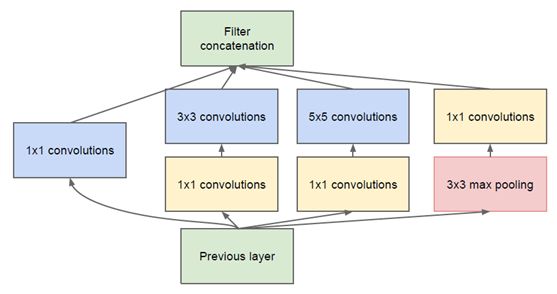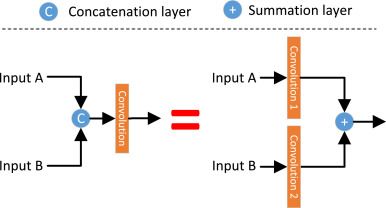- 【LeetCode 热题 100】24. 两两交换链表中的节点——(解法一)迭代+哨兵
xumistore
LeetCodeleetcode链表算法java
Problem:24.两两交换链表中的节点题目:给你一个链表,两两交换其中相邻的节点,并返回交换后链表的头节点。你必须在不修改节点内部的值的情况下完成本题(即,只能进行节点交换)。文章目录整体思路完整代码时空复杂度时间复杂度:O(N)空间复杂度:O(1)整体思路这段代码旨在解决一个经典的链表操作问题:两两交换链表中的节点(SwapNodesinPairs)。问题要求将链表中每两个相邻的节点进行交换
- 理解TCP连接中的进程阻塞与CPU调度机制
109702008
编程#C语言网络tcp/ip网络人工智能
引言在计算机网络通信中,TCP连接的建立是一个经典的三次握手过程。当用户调用connect()函数发起连接时,内核会发送SYN报文并等待对方的SYN-ACK响应。此时,调用进程通常会进入阻塞状态,暂停执行直至连接成功或超时。这一机制看似简单,但其背后的内核实现却涉及进程调度、等待队列管理和CPU资源分配等复杂操作。本文将深入探讨阻塞状态的实现原理,并解析CPU在进程阻塞期间的行为。一、进程阻塞的实
- 霍夫变换(Hough Transform)算法原来详解和纯C++代码实现以及OpenCV中的使用示例
点云SLAM
算法图形图像处理算法opencv图像处理与计算机视觉算法直线提取检测目标检测霍夫变换算法
霍夫变换(HoughTransform)是一种经典的图像处理与计算机视觉算法,广泛用于检测图像中的几何形状,例如直线、圆、椭圆等。其核心思想是将图像空间中的“点”映射到参数空间中的“曲线”,从而将形状检测问题转化为参数空间中的峰值检测问题。一、霍夫变换基本思想输入:边缘图像(如经过Canny边缘检测)输出:一组满足几何模型的形状(如直线、圆)关键思想:图像空间中的一个点→参数空间中的一个曲线参数空
- 什么是RFM模型
走过冬季
学习笔记大数据数据分析
RFM模型是客户价值分析中一种经典且实用的量化模型,它通过三个关键维度评估用户价值,帮助企业识别最有价值的客户群体。名称RFM由三个核心指标的英文首字母组成:R(Recency)-最近一次消费时间定义:用户上一次发生交易行为距今的时间长度(如多少天前)。意义:衡量用户的活跃度和流失风险。R值越小(最近有消费),说明用户越活跃,流失风险越低;R值越大(很久没消费),用户流失风险越高。母婴场景示例:一
- 深度学习篇---昇腾NPU&CANN 工具包
Atticus-Orion
上位机知识篇图像处理篇深度学习篇深度学习人工智能NPU昇腾CANN
介绍昇腾NPU是华为推出的神经网络处理器,具有强大的AI计算能力,而CANN工具包则是面向AI场景的异构计算架构,用于发挥昇腾NPU的性能优势。以下是详细介绍:昇腾NPU架构设计:采用达芬奇架构,是一个片上系统,主要由特制的计算单元、大容量的存储单元和相应的控制单元组成。集成了多个CPU核心,包括控制CPU和AICPU,前者用于控制处理器整体运行,后者承担非矩阵类复杂计算。此外,还拥有AICore
- 深度学习图像分类数据集—桃子识别分类
AI街潜水的八角
深度学习图像数据集深度学习分类人工智能
该数据集为图像分类数据集,适用于ResNet、VGG等卷积神经网络,SENet、CBAM等注意力机制相关算法,VisionTransformer等Transformer相关算法。数据集信息介绍:桃子识别分类:['B1','M2','R0','S3']训练数据集总共有6637张图片,每个文件夹单独放一种数据各子文件夹图片统计:·B1:1601张图片·M2:1800张图片·R0:1601张图片·S3:
- 使用NVIDIA NeRF将2D图像转换为逼真的3D模型(Python)
ByteWhiz
3dpython计算机视觉Python
使用NVIDIANeRF将2D图像转换为逼真的3D模型(Python)NeuralRadianceFields(NeRF)是一种强大的方法,可以将2D图像转换为逼真的3D模型。它使用神经网络来建模场景的辐射场,并通过渲染多个视角的图像来重建3D模型。在本文中,我们将使用Python和NVIDIANeRF库来实现这一过程。首先,我们需要安装所需的库。我们可以通过以下命令使用pip安装NVIDIANe
- 【C语言网络编程】HTTP 客户端请求(域名解析过程)
在做C语言网络编程或模拟HTTP客户端时,第一步就离不开“把域名解析为IP地址”这一步。很多人可能直接复制粘贴一段gethostbyname的代码,但未必真正理解它的原理。本篇博客将围绕一个经典函数:char*host_to_ip(constchar*hostname)深入剖析DNS解析过程、IP地址转换机制,并进一步带你了解HTTP请求是如何基于TCP通信进行的。一、核心函数:host_to_i
- [论文阅读]Distilling Step-by-Step! Outperforming Larger Language Models with Less Training Data and Smal
0x211
论文阅读语言模型人工智能自然语言处理
中文译名:逐步蒸馏!以较少的训练数据和较小的模型规模超越较大的语言模型发布链接:http://arxiv.org/abs/2305.02301AcceptedtoFindingsofACL2023阅读原因:近期任务需要用到蒸馏操作,了解相关知识核心思想:改变视角。原来的视角:把LLMs视为噪声标签的来源。现在的视角:把LLMs视为能够推理的代理。方法好在哪?需要的数据量少,得到的结果好。文章的方法
- 分布式选举算法<一> Bully算法
分布式选举算法详解:Bully算法引言在分布式系统中,节点故障是不可避免的。当主节点(Leader)发生故障时,系统需要快速选举出新的主节点来保证服务的连续性。Bully算法是一种经典的分布式选举算法,以其简单高效的特点被广泛应用于各种分布式系统中。什么是Bully算法?Bully算法是一种基于优先级的分布式选举算法。每个节点都有一个唯一的ID,ID值越大的节点优先级越高。当主节点故障时,优先级最
- Git 分支管理规范
一、大公司的分支管理实践1.GitFlow(经典模型)master:主分支,仅用于发布正式版本featureelop:开发分支,集成新功能feature/*:功能分支,从featureelop分支创建,用于开发新功能release/*:发布分支,从featureelop分支创建,用于测试和修复hotfix/*:热修复分支,从master分支创建,用于紧急修复2.GitHubFlow(持续交付型)m
- 图神经网络:挖掘关系数据中的宝藏
图神经网络:挖掘关系数据中的宝藏在浩瀚的数据海洋中,蕴藏着一类特殊而强大的资源——关系数据。它们不是孤立的点,而是相互连接、彼此影响的复杂网络:社交平台上朋友的朋友、电商系统中商品与用户的互动、蛋白质分子内原子的结合、城市交通网中的道路连接……这些数据天然以图的形式存在,节点代表实体,边则承载着实体间千丝万缕的关系。传统的数据挖掘工具面对这些盘根错节的结构往往力不从心,而图神经网络(GNN)的崛起
- 从RNN循环神经网络到Transformer注意力机制:解析神经网络架构的华丽蜕变
熊猫钓鱼>_>
神经网络rnntransformer
1.引言在自然语言处理和序列建模领域,神经网络架构经历了显著的演变。从早期的循环神经网络(RNN)到现代的Transformer架构,这一演变代表了深度学习方法在处理序列数据方面的重大进步。本文将深入比较这两种架构,分析它们的工作原理、优缺点,并通过实验结果展示它们在实际应用中的性能差异。2.循环神经网络(RNN)2.1基本原理循环神经网络是专门为处理序列数据而设计的神经网络架构。RNN的核心思想
- 2024年运维最新分布式存储ceph osd 常用操作_ceph查看osd对应硬盘(1),2024年最新Linux运维编程基础教程
2401_83944328
程序员运维分布式ceph
最全的Linux教程,Linux从入门到精通======================linux从入门到精通(第2版)Linux系统移植Linux驱动开发入门与实战LINUX系统移植第2版Linux开源网络全栈详解从DPDK到OpenFlow第一份《Linux从入门到精通》466页====================内容简介====本书是获得了很多读者好评的Linux经典畅销书**《Linu
- 【C语言经典面试题】memcpy函数有没有更高效的拷贝实现方法?
架构师李肯
嵌入式物联网开发进阶c语言面试性能优化
【C语言经典面试题】memcpy函数有没有更高效的拷贝实现方法?我相信大部分初中级C程序员在面试的过程中,可能都被问过关于memcpy函数的问题,甚至需要手撕memcpy。本文从另一个角度带你领悟一下memcpy的面试题,你可以看看是否能接得住?文章目录1写在前面2源码实现2.1函数申明2.2简单的功能实现2.3满足大数据量拷贝的功能实现3源码测试4小小总结5更多分享1写在前面假如你遇到下面的面试
- 全网最全100道C语言高频经典面试题及答案解析:C语言程序员面试题库分类总结
猿享天开
学懂C语言-C语言从入门到精通c语言c++面试
前言在计算科学领域,C语言犹如一座横跨硬件与软件的桥梁——其简洁的语法背后,承载着操作系统、数据库、嵌入式系统等基础软件的运行命脉。当开发者面对大厂面试中"用户态与内核态切换的开销量化"或"自旋锁在NUMA架构下的性能陷阱"等深度问题时,仅凭教科书知识往往难以应对。本文正是为解决这一痛点而生。我们摒弃传统面试题集的简单罗列模式,精选100个直指系统编程本质的问题,每个案例均包含:工业级场景还原:基
- 如何使用Python实现交通工具识别
如何使用Python实现交通工具识别文章目录技术架构功能流程识别逻辑用户界面增强特性依赖项主要类别内容展示该系统是一个基于深度学习的交通工具识别工具,具备以下核心功能与特点:技术架构使用预训练的ResNet50卷积神经网络模型(来自ImageNet数据集)集成图像增强预处理技术(随机裁剪、旋转、翻转等)采用多数投票机制提升预测稳定性基于置信度评分的结果筛选策略功能流程用户通过GUI界面选择待识别图
- 【EGSR2025】材质+扩散模型+神经网络相关论文整理随笔(四)
Superstarimage
文献随笔材质神经网络人工智能扩散模型
AnevaluationofSVBRDFPredictionfromGenerativeImageModelsforAppearanceModelingof3DScenes输入3D场景的几何和一张参考图像,通过扩散模型和SVBRDF预测器获取多视角的材质maps,这些maps最终合并成场景的纹理地图集,并支持在任意视角、任意光照条件下进行重新渲染。样例图如下:在当前时代的技术背景下,生成与几何匹配
- YOLO11 目标检测从安装到实战
前言YOLO(YouOnlyLookOnce)系列是目标检测领域的经典算法,凭借速度快、精度高的特点被广泛应用。最新的YOLO11在模型结构和性能上进一步优化,本文将从环境搭建到实战应用,详细讲解YOLO11的使用方法,适合新手快速上手。一、环境准备1.系统要求操作系统:Windows10/11、Ubuntu20.04+、欧拉系统等硬件:CPU可运行,GPU(NVIDIA)可加速(推荐,需支持CU
- CNN 猫狗识别:从理论到实战的深度解析
爱熬夜的小古
cnn深度学习人工智能
在计算机视觉领域,卷积神经网络(ConvolutionalNeuralNetwork,CNN)凭借其强大的特征提取和模式识别能力,成为图像分类任务的主流技术。猫狗识别作为经典的图像分类问题,不仅能帮助我们理解CNN的工作原理,还能为实际应用提供技术支持。本文将深入探讨CNN在猫狗识别中的应用,从理论基础到实战代码,带你全面掌握这项技术。一、CNN基础理论概述(一)CNN的核心组件卷积层:是CNN的
- 深度学习实战-使用TensorFlow与Keras构建智能模型
程序员Gloria
Python超入门TensorFlowpython
深度学习实战-使用TensorFlow与Keras构建智能模型深度学习已经成为现代人工智能的重要组成部分,而Python则是实现深度学习的主要编程语言之一。本文将探讨如何使用TensorFlow和Keras构建深度学习模型,包括必要的代码实例和详细的解析。1.深度学习简介深度学习是机器学习的一个分支,使用多层神经网络来学习和表示数据中的复杂模式。其广泛应用于图像识别、自然语言处理、推荐系统等领域。
- 【深度学习解惑】在实践中如何发现和修正RNN训练过程中的数值不稳定?
云博士的AI课堂
大模型技术开发与实践哈佛博后带你玩转机器学习深度学习深度学习rnn人工智能tensorflowpytorch神经网络机器学习
在实践中发现和修正RNN训练过程中的数值不稳定目录引言与背景介绍原理解释代码说明与实现应用场景与案例分析实验设计与结果分析性能分析与技术对比常见问题与解决方案创新性与差异性说明局限性与挑战未来建议和进一步研究扩展阅读与资源推荐图示与交互性内容语言风格与通俗化表达互动交流1.引言与背景介绍循环神经网络(RNN)在处理序列数据时表现出色,但训练过程中常面临梯度消失和梯度爆炸问题,导致数值不稳定。当网络
- 《从依赖纠缠到接口协作:ASP.NET Core注入式开发指南》
后端
在C#的ASP.NETCore开发中,依赖注入绝非简单的技术技巧,而是重构代码关系的底层逻辑。它像一套隐形的神经网络,让程序模块摆脱硬编码的束缚,在运行时实现动态连接,从而为系统注入可测试、可进化的核心生命力。理解其深层价值,需要穿透"服务注册与获取"的表层操作,触及它对软件设计哲学的重塑。依赖注入的本质,是对"依赖关系"的去中心化治理。传统开发中,模块间的依赖如同藤蔓缠绕的树木,一个组件直接创建
- Swift2编程之道:POP+MVVM
秋雨暗千家
Swift学习笔记Swift大讲堂popmvvmswiftiOS
Swift2.0中引入了协议扩展的特性,并且建议开发者一切从协议(Protocol)出发,经过几个月的学习探索,博主发现Swift作为一门面向协议编程(POP)的语言非常适合时下火热的MVVM架构。MVVM已经提出有一段时间了,如果你还不懂什么是MVVM,建议先去补充相关的知识,再回到本文中。在CocoaTouch体系内,MVC是广为人知的经典架构,博主之前也讲解过MVC的相关知识,但是随着业务逻
- 动态时间规整(Dynamic Time Warping,DTW)介绍
EmorZhong
机器学习人工智能深度学习数据结构算法
在时序数据分析中,动态时间规整(DynamicTimeWarping,DTW)是一种经典的用于度量两个时间序列相似度的算法。它的核心价值在于解决了传统距离度量(如欧氏距离)在处理时间序列时的局限性——尤其是当序列存在时间错位(如节奏快慢不同)或长度差异时,仍能准确捕捉它们的“形状相似性”。一、为什么需要DTW?传统的距离度量(如欧氏距离)要求两个时间序列必须长度相同且时间点严格对齐。但实际场景中,
- 技术类岗位面试中经典问题总结分享
1.谈淡你的最成功/失败的经历,你现在回去(时光倒流)怎么做2.你做过的一个项目/事例,说说过程(观是否谈结果)过程中,怎么进行信息检索的3.请你对我进行一个评价(观察是否谈到缺点)4.请用一句话介绍自己(总结十逻辑思维)5.你所学的课程中最喜欢/了解哪一个,请淡谈课程内容6.请描述一下用单片机点亮一个流水灯的全过程/请描述AD绘制PCB板的全过程/请详细描述用C语编辑环境输出一个Hellow,w
- 抽象类与接口:Java面向对象设计的两大支柱
一、学习抽象类与接口的必要性在Java面向对象设计中,抽象类和接口是构建可扩展、可维护系统的基石:抽象类:实现代码复用与框架设计的核心工具接口:定义系统契约与实现多继承特性的关键机制模板方法模式:通过抽象类实现算法框架的经典设计模式掌握这些概念能帮助开发者:设计灵活可扩展的系统架构实现代码复用与多态的优雅结合适应Java版本演进带来的新特性二、抽象类详解2.1抽象类核心特性publicabstra
- 深入理解计算机系统:原理与实践
又可乐
本文还有配套的精品资源,点击获取简介:本书是计算机科学的经典之作,分为第三版英文版和第二版中英双语版,深入讲解了计算机系统的运作原理,包括操作系统、计算机架构、编译器设计等,特别强调Linux和Unix操作系统的相关知识。读者将通过本书获得从硬件到软件的全面理解,包括CPU、内存、I/O设备、指令集、寻址模式、进程管理、内存管理、文件系统、C语言编程、编译器设计、网络基础、TCP/IP协议栈、套接
- Linux 进程创建探秘:为什么 strace 看不到 fork 调用?
x.van
Linuxlinux运维服务器
在学习Linux系统编程时,很多初学者会对进程创建机制感到困惑。当使用strace跟踪程序执行时,明明代码中调用了fork(),却在输出中找不到fork系统调用的踪迹,反而看到了clone()。这背后隐藏着Linux进程创建的重要机制,本文将逐步揭开这个谜团。一、Unix进程模型基础:fork与execve的黄金组合1.1进程创建的核心概念在Unix/Linux系统中,进程创建遵循一个经典模型:先
- 各种消息队列经典问题解决方案——消息丢失、顺序消费、消息积压、重复消费
EyeDropLyq
rabbitmqrocketmqkafka
写在开头:对于消息队列这种中间件来说,只要进入消息队列就会有几个绕不开的问题,比如:消息丢失、顺序消费、消息积压、重复消费,下面就来讲解一下市面上比较常见的各个不同的消息队列产品针对这四个问题的解决方案。1、Kafka消息丢失解决方案对于Kafka这个消息队列来说,消息丢失的环节有下面的几个地方:1、消息生产者发送消息给Broker的时候数据丢失2、Broker异常导致Broker中的数据丢失3、
- 微信开发者验证接口开发
362217990
微信 开发者 token 验证
微信开发者接口验证。
Token,自己随便定义,与微信填写一致就可以了。
根据微信接入指南描述 http://mp.weixin.qq.com/wiki/17/2d4265491f12608cd170a95559800f2d.html
第一步:填写服务器配置
第二步:验证服务器地址的有效性
第三步:依据接口文档实现业务逻辑
这里主要讲第二步验证服务器有效性。
建一个
- 一个小编程题-类似约瑟夫环问题
BrokenDreams
编程
今天群友出了一题:
一个数列,把第一个元素删除,然后把第二个元素放到数列的最后,依次操作下去,直到把数列中所有的数都删除,要求依次打印出这个过程中删除的数。
&
- linux复习笔记之bash shell (5) 关于减号-的作用
eksliang
linux关于减号“-”的含义linux关于减号“-”的用途linux关于“-”的含义linux关于减号的含义
转载请出自出处:
http://eksliang.iteye.com/blog/2105677
管道命令在bash的连续处理程序中是相当重要的,尤其在使用到前一个命令的studout(标准输出)作为这次的stdin(标准输入)时,就显得太重要了,某些命令需要用到文件名,例如上篇文档的的切割命令(split)、还有
- Unix(3)
18289753290
unix ksh
1)若该变量需要在其他子进程执行,则可用"$变量名称"或${变量}累加内容
什么是子进程?在我目前这个shell情况下,去打开一个新的shell,新的那个shell就是子进程。一般状态下,父进程的自定义变量是无法在子进程内使用的,但通过export将变量变成环境变量后就能够在子进程里面应用了。
2)条件判断: &&代表and ||代表or&nbs
- 关于ListView中性能优化中图片加载问题
酷的飞上天空
ListView
ListView的性能优化网上很多信息,但是涉及到异步加载图片问题就会出现问题。
具体参看上篇文章http://314858770.iteye.com/admin/blogs/1217594
如果每次都重新inflate一个新的View出来肯定会造成性能损失严重,可能会出现listview滚动是很卡的情况,还会出现内存溢出。
现在想出一个方法就是每次都添加一个标识,然后设置图
- 德国总理默多克:给国人的一堂“震撼教育”课
永夜-极光
教育
http://bbs.voc.com.cn/topic-2443617-1-1.html德国总理默多克:给国人的一堂“震撼教育”课
安吉拉—默克尔,一位经历过社会主义的东德人,她利用自己的博客,发表一番来华前的谈话,该说的话,都在上面说了,全世界想看想传播——去看看默克尔总理的博客吧!
德国总理默克尔以她的低调、朴素、谦和、平易近人等品格给国人留下了深刻印象。她以实际行动为中国人上了一堂
- 关于Java继承的一个小问题。。。
随便小屋
java
今天看Java 编程思想的时候遇见一个问题,运行的结果和自己想想的完全不一样。先把代码贴出来!
//CanFight接口
interface Canfight {
void fight();
}
//ActionCharacter类
class ActionCharacter {
public void fight() {
System.out.pr
- 23种基本的设计模式
aijuans
设计模式
Abstract Factory:提供一个创建一系列相关或相互依赖对象的接口,而无需指定它们具体的类。 Adapter:将一个类的接口转换成客户希望的另外一个接口。A d a p t e r模式使得原本由于接口不兼容而不能一起工作的那些类可以一起工作。 Bridge:将抽象部分与它的实现部分分离,使它们都可以独立地变化。 Builder:将一个复杂对象的构建与它的表示分离,使得同
- 《周鸿祎自述:我的互联网方法论》读书笔记
aoyouzi
读书笔记
从用户的角度来看,能解决问题的产品才是好产品,能方便/快速地解决问题的产品,就是一流产品.
商业模式不是赚钱模式
一款产品免费获得海量用户后,它的边际成本趋于0,然后再通过广告或者增值服务的方式赚钱,实际上就是创造了新的价值链.
商业模式的基础是用户,木有用户,任何商业模式都是浮云.商业模式的核心是产品,本质是通过产品为用户创造价值.
商业模式还包括寻找需求
- JavaScript动态改变样式访问技术
百合不是茶
JavaScriptstyle属性ClassName属性
一:style属性
格式:
HTML元素.style.样式属性="值";
创建菜单:在html标签中创建 或者 在head标签中用数组创建
<html>
<head>
<title>style改变样式</title>
</head>
&l
- jQuery的deferred对象详解
bijian1013
jquerydeferred对象
jQuery的开发速度很快,几乎每半年一个大版本,每两个月一个小版本。
每个版本都会引入一些新功能,从jQuery 1.5.0版本开始引入的一个新功能----deferred对象。
&nb
- 淘宝开放平台TOP
Bill_chen
C++c物流C#
淘宝网开放平台首页:http://open.taobao.com/
淘宝开放平台是淘宝TOP团队的产品,TOP即TaoBao Open Platform,
是淘宝合作伙伴开发、发布、交易其服务的平台。
支撑TOP的三条主线为:
1.开放数据和业务流程
* 以API数据形式开放商品、交易、物流等业务;
&
- 【大型网站架构一】大型网站架构概述
bit1129
网站架构
大型互联网特点
面对海量用户、海量数据
大型互联网架构的关键指标
高并发
高性能
高可用
高可扩展性
线性伸缩性
安全性
大型互联网技术要点
前端优化
CDN缓存
反向代理
KV缓存
消息系统
分布式存储
NoSQL数据库
搜索
监控
安全
想到的问题:
1.对于订单系统这种事务型系统,如
- eclipse插件hibernate tools安装
白糖_
Hibernate
eclipse helios(3.6)版
1.启动eclipse 2.选择 Help > Install New Software...> 3.添加如下地址:
http://download.jboss.org/jbosstools/updates/stable/helios/ 4.选择性安装:hibernate tools在All Jboss tool
- Jquery easyui Form表单提交注意事项
bozch
jquery easyui
jquery easyui对表单的提交进行了封装,提交的方式采用的是ajax的方式,在开发的时候应该注意的事项如下:
1、在定义form标签的时候,要将method属性设置成post或者get,特别是进行大字段的文本信息提交的时候,要将method设置成post方式提交,否则页面会抛出跨域访问等异常。所以这个要
- Trie tree(字典树)的Java实现及其应用-统计以某字符串为前缀的单词的数量
bylijinnan
java实现
import java.util.LinkedList;
public class CaseInsensitiveTrie {
/**
字典树的Java实现。实现了插入、查询以及深度优先遍历。
Trie tree's java implementation.(Insert,Search,DFS)
Problem Description
Igna
- html css 鼠标形状样式汇总
chenbowen00
htmlcss
css鼠标手型cursor中hand与pointer
Example:CSS鼠标手型效果 <a href="#" style="cursor:hand">CSS鼠标手型效果</a><br/>
Example:CSS鼠标手型效果 <a href="#" style=&qu
- [IT与投资]IT投资的几个原则
comsci
it
无论是想在电商,软件,硬件还是互联网领域投资,都需要大量资金,虽然各个国家政府在媒体上都给予大家承诺,既要让市场的流动性宽松,又要保持经济的高速增长....但是,事实上,整个市场和社会对于真正的资金投入是非常渴望的,也就是说,表面上看起来,市场很活跃,但是投入的资金并不是很充足的......
- oracle with语句详解
daizj
oraclewithwith as
oracle with语句详解 转
在oracle中,select 查询语句,可以使用with,就是一个子查询,oracle 会把子查询的结果放到临时表中,可以反复使用
例子:注意,这是sql语句,不是pl/sql语句, 可以直接放到jdbc执行的
----------------------------------------------------------------
- hbase的简单操作
deng520159
数据库hbase
近期公司用hbase来存储日志,然后再来分析 ,把hbase开发经常要用的命令找了出来.
用ssh登陆安装hbase那台linux后
用hbase shell进行hbase命令控制台!
表的管理
1)查看有哪些表
hbase(main)> list
2)创建表
# 语法:create <table>, {NAME => <family&g
- C语言scanf继续学习、算术运算符学习和逻辑运算符
dcj3sjt126com
c
/*
2013年3月11日20:37:32
地点:北京潘家园
功能:完成用户格式化输入多个值
目的:学习scanf函数的使用
*/
# include <stdio.h>
int main(void)
{
int i, j, k;
printf("please input three number:\n"); //提示用
- 2015越来越好
dcj3sjt126com
歌曲
越来越好
房子大了电话小了 感觉越来越好
假期多了收入高了 工作越来越好
商品精了价格活了 心情越来越好
天更蓝了水更清了 环境越来越好
活得有奔头人会步步高
想做到你要努力去做到
幸福的笑容天天挂眉梢 越来越好
婆媳和了家庭暖了 生活越来越好
孩子高了懂事多了 学习越来越好
朋友多了心相通了 大家越来越好
道路宽了心气顺了 日子越来越好
活的有精神人就不显
- java.sql.SQLException: Value '0000-00-00' can not be represented as java.sql.Tim
feiteyizu
mysql
数据表中有记录的time字段(属性为timestamp)其值为:“0000-00-00 00:00:00”
程序使用select 语句从中取数据时出现以下异常:
java.sql.SQLException:Value '0000-00-00' can not be represented as java.sql.Date
java.sql.SQLException: Valu
- Ehcache(07)——Ehcache对并发的支持
234390216
并发ehcache锁ReadLockWriteLock
Ehcache对并发的支持
在高并发的情况下,使用Ehcache缓存时,由于并发的读与写,我们读的数据有可能是错误的,我们写的数据也有可能意外的被覆盖。所幸的是Ehcache为我们提供了针对于缓存元素Key的Read(读)、Write(写)锁。当一个线程获取了某一Key的Read锁之后,其它线程获取针对于同
- mysql中blob,text字段的合成索引
jackyrong
mysql
在mysql中,原来有一个叫合成索引的,可以提高blob,text字段的效率性能,
但只能用在精确查询,核心是增加一个列,然后可以用md5进行散列,用散列值查找
则速度快
比如:
create table abc(id varchar(10),context blog,hash_value varchar(40));
insert into abc(1,rep
- 逻辑运算与移位运算
latty
位运算逻辑运算
源码:正数的补码与原码相同例+7 源码:00000111 补码 :00000111 (用8位二进制表示一个数)
负数的补码:
符号位为1,其余位为该数绝对值的原码按位取反;然后整个数加1。 -7 源码: 10000111 ,其绝对值为00000111 取反加一:11111001 为-7补码
已知一个数的补码,求原码的操作分两种情况:
- 利用XSD 验证XML文件
newerdragon
javaxmlxsd
XSD文件 (XML Schema 语言也称作 XML Schema 定义(XML Schema Definition,XSD)。 具体使用方法和定义请参看:
http://www.w3school.com.cn/schema/index.asp
java自jdk1.5以上新增了SchemaFactory类 可以实现对XSD验证的支持,使用起来也很方便。
以下代码可用在J
- 搭建 CentOS 6 服务器(12) - Samba
rensanning
centos
(1)安装
# yum -y install samba
Installed:
samba.i686 0:3.6.9-169.el6_5
# pdbedit -a rensn
new password:123456
retype new password:123456
……
(2)Home文件夹
# mkdir /etc
- Learn Nodejs 01
toknowme
nodejs
(1)下载nodejs
https://nodejs.org/download/ 选择相应的版本进行下载 (2)安装nodejs 安装的方式比较多,请baidu下
我这边下载的是“node-v0.12.7-linux-x64.tar.gz”这个版本 (1)上传服务器 (2)解压 tar -zxvf node-v0.12.
- jquery控制自动刷新的代码举例
xp9802
jquery
1、html内容部分 复制代码代码示例: <div id='log_reload'>
<select name="id_s" size="1">
<option value='2'>-2s-</option>
<option value='3'>-3s-</option

